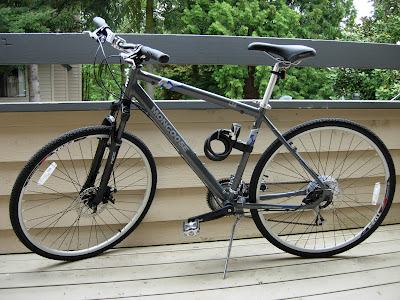There are a lot of things to see and do around Seattle. A few weeks ago I went to the Pacific Science Center. I think its better than the one in Vancouver. I saw Speed Racer at IMAX. It was pretty dissapointing, but I wasn't too surprised based on its score at IMDB. Yesterday I went to see a Cirque Du Soleil show called Corteo. It was an excellent production, but I liked the Mystère show I saw in Las Vegas better.

I got a new bike earlier this month. There are supposed to be some really nice bike trails in this area, so I plan on exploring a few of them over the summer.
Here is a photo album I will be uploading pictures to over the summer.
